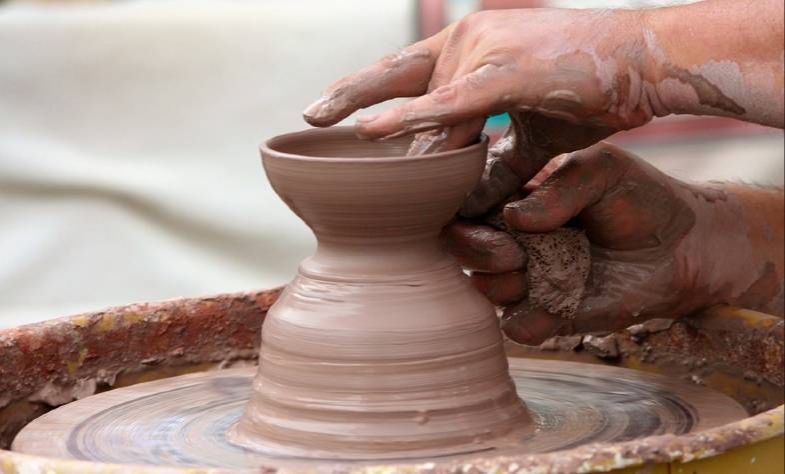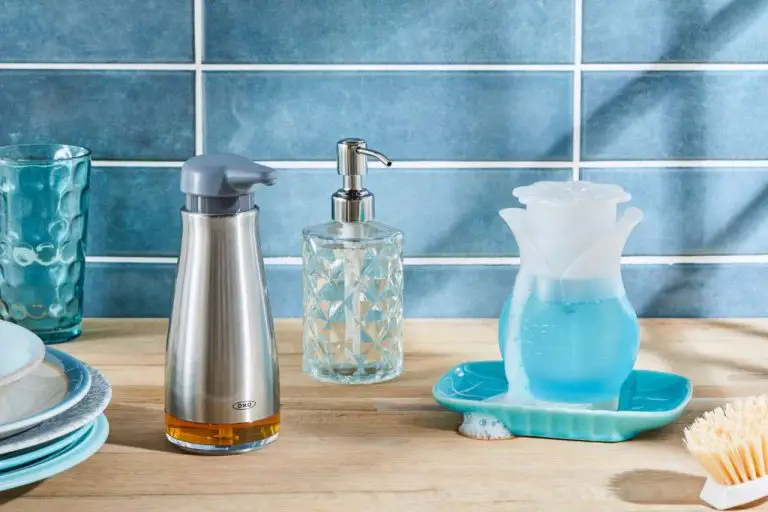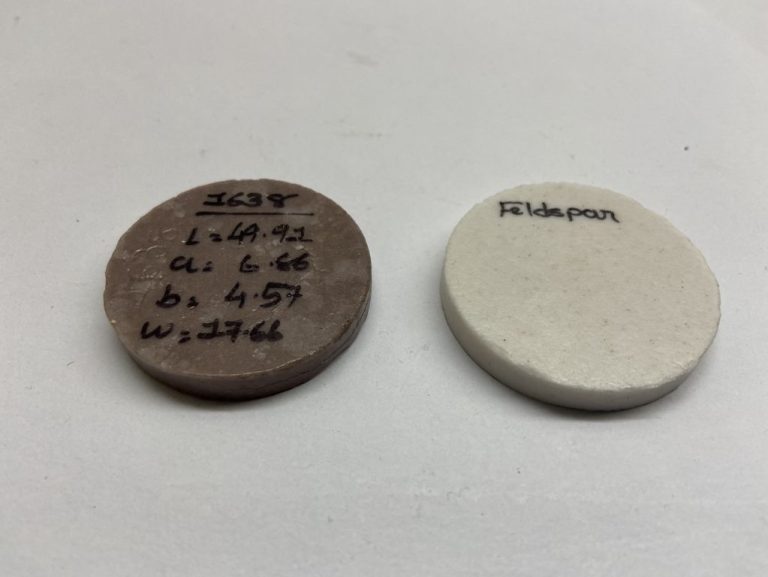Clay 101: An Overview Of Clay Types And Uses
Clay is a fine-grained natural material comprised primarily of minerals like silica, alumina, and water. The small size of the clay particles gives clay unique properties that make it useful for a variety of applications.
There are three main groups of clays: kaolinite, montmorillonite-smectite, and illite. Each type has distinct characteristics based on its chemical composition and molecular structure.
People have utilized clay for thousands of years, dating back to the very beginnings of human civilization. Clay’s plasticity when wet, hardens when fired or dried in the sun, making it ideal for pottery, bricks, tiles, and figurines. The earliest recorded use of clay was for pottery and decorative vessels in China over 18,000 years ago.
Today, clay remains an important material around the world. Modern uses now also include construction materials, industrial products, paper, cosmetics, medicine, drilling fluids, and more.
Types of Clay
There are several different types of clay used in pottery and ceramics. The most common types include:
- Kaolin (China Clay) – A soft, white clay that is named after the hills in China where it was mined. Kaolin is the primary clay used in porcelain. It fires to a white or near white color. Kaolin clay has a fine particle size and provides strength and plasticity without reducing workability.
- Ball clay – A secondary clay with high plasticity and a fine particle size. Ball clay is often added to stoneware and porcelain bodies as it improves workability and strength. It fires to a light cream or tan color.
- Fire clay – Fire clays are less plastic clays that are resistant to high firing temperatures. They are often used in stoneware glazes and bodies as they withstand thermal shock. Fire clays can be white, red, brown or gray.[1]
- Bentonite – A very plastic clay derived from volcanic ash. Bentonite helps improve workability and plasticity. It can be added to earthenware and stoneware bodies.
- Common clay – Abundant surface clay that fires to a red or brown color due to its iron content. Common clay is used for bricks, terra cotta and some coarse earthenware.
- Earthenware – Made from clays that mature at lower temperatures, typically 1900°F – 2100°F. The clay bodies are porous when fired.
- Stoneware – Dense clay bodies made from ball clays and fire clays that become vitrified and non-porous at higher temperatures around 2200°F.
- Porcelain – A white, translucent and highly vitrified clay body composed primarily of kaolin. Porcelain fires at over 2300°F.
Chemical Composition
The chemical composition of clay varies, but the main components are silica, alumina, water, iron oxides, calcium, and magnesium.[1] Silica makes up over 50% of clay’s composition, while alumina usually accounts for 20-30%. Water content can range from 5-25%. Iron oxides, calcium, and magnesium are present in smaller amounts depending on the type of clay.
There are two main groups of clays based on chemical composition: kaolinite and bentonite. Kaolinite clays are dominated by kaolinite and consist mainly of silica, alumina and water. They have very little capacity to adsorb cations. Bentonite clays contain montmorillonite as the main mineral and have higher cation exchange capacity. They can absorb more water and expand more than kaolinite clays.[2]
The specific percentages of the chemical components vary between clay types and deposits. But the basic chemical structure of hydrated aluminosilicates with substitutions gives clay its unique properties.
Physical Properties
Clay’s most notable physical property is its plasticity when wet, which allows it to be shaped and molded. This plasticity comes from the flat, plate-like structure of clay particles which can slide over one another when wet (Wikipedia, 2022). When clay dries or is fired, it hardens and becomes rigid.
Clay also demonstrates shrinkage when drying due to the loss of adsorbed water. Fired clays can shrink from 10-15%, while some unfired clays may shrink up to 30% (USGS, 2009). The amount of shrinkage depends on the clay mineral composition.
Clay’s porous structure gives it a moderate specific gravity of 2-3. Porosity allows clays to adsorb significant amounts of water between platelet particles. However, the pores are very small, giving clays low permeability overall (Britannica, 2022).
The strength of fired clay products depends on composition but can reach over 100 MPa in compressive strength. However, the strength is much lower for unfired clay. Plasticity allows shaping without fracturing, but dried clay is quite fragile (Wikipedia, 2022).
Geological Origins
Much of the world’s clay deposits originated from the weathering and erosion of pre-existing rocks over long periods of time. The primary sedimentary rocks associated with clay formation are shale and mudstone, which were once deposits of mud, silt and clay on the Earth’s surface. These can weather and erode into clay minerals.
One of the most common ways clay forms is through chemical weathering of feldspar, which is a group of rock-forming minerals found in igneous and metamorphic rocks. As feldspar weathers, it breaks down into fine clay particles over time. The chemical reaction between feldspar and water along with carbon dioxide produces clays like kaolinite.
Clay can also originate from volcanic ash, which contains a high silica content. As the ash weathers, it forms clay minerals. Glacial deposits left behind by retreating glaciers can also produce clays through mechanical weathering and grinding of rock.
Overall, clay primarily forms from the weathering of igneous rocks like granite as well as from sedimentary shale and mudstone deposits. This weathering process gradually breaks down feldspars and other silicate minerals into fine clay particles over long timescales.
Mining and Processing
Most clay in the United States is mined through open-pit methods using various types of heavy equipment like draglines, power shovels, front-end loaders, backhoes, and scrapers [1]. After extraction, raw clay goes through a variety of processing steps to prepare it for use.
The initial step is called blunging, where the clay is mixed with water to form a slurry. This slurry then goes through a process called spray drying, where hot gases are used to dry the clay slurry into a powder. Next, the clay powder is sieved to remove impurities and achieve the desired particle size. Finally, magnetic separation may be used to remove any remaining iron contaminants from the clay.
These processing steps transform the raw clay extracted through mining into a purified and optimized material ready for manufacturing into final products.
Pottery
One of the oldest and most prevalent uses of clay is for making pottery. Evidence of pottery production dates back over 20,000 years. Pottery refers to any object made from clay hardened by heat. The earliest pottery was often hand formed from coils or slabs of clay. Methods for forming pottery advanced over time to include throwing on a potter’s wheel, molding, and slipcasting 1.

Glazes and decorations were also developed to enhance the appearance and function of pottery. Glazes provide an impermeable and decorative surface to the porous clay. Glazes may be transparent, colored, or opaque. Decorative techniques include painting, incising, stamping, and applying decorative slips. After forming and decorating, pottery must be fired in a kiln to permanently harden the clay through sintering. Firing temperatures vary based on the type of clay and glaze used 2.
There are several major types of pottery defined by the clay composition, forming method, glazing technique, and firing temperature. These include earthenware, stoneware, porcelain, and terra cotta. Each type has unique properties and applications ranging from tableware to architectural tiles 3.
Bricks
History of Bricks
Bricks date back to 7000 BCE when they were first made in the Middle East, particularly Mesopotamia and ancient Egypt, using clay and sun-baked mud as building materials. The earliest bricks were simply dried blocks of clay that were stacked to form structures. Around 3000 BCE, the firing of bricks in kilns was invented, resulting in much stronger bricks (9-manufacturing-of-brick.pdf).
Brick Manufacturing Process
Modern brick manufacturing primarily uses clay, shale, soft slate, calcium silicates, and mixtures of several of these materials as the raw materials (EPA). The basic steps are mining, grinding, screening and blending the raw materials, forming the bricks, drying, and firing them in kilns. Different manufacturing techniques are used depending on the desired characteristics of the bricks.
Types of Bricks
Common types of bricks include fired clay, concrete, calcium silicate, fly ash clay, and fired clay fly ash bricks. Bricks come in various shapes, sizes, colors, textures, and physical properties for use in different construction applications like buildings, roads, retaining walls, and more (EPA).
Ceramics
Ceramics have a long history dating back thousands of years. Some of the earliest known ceramics were made in China and date back to 20,000 BC. Ceramic materials like clay have been used to make pottery, dishes, art, and construction materials like bricks and tiles for millennia.
Today, ceramics manufacturing makes use of more advanced techniques like slip casting and jiggering. Slip casting involves pouring a liquid clay slip into a plaster mold to form a ceramic shape after the clay dries. Jiggering uses a rotating mold and mechanical tools to shape and trim ceramic wares.
In industrial applications, ceramics are valued for their hardness, durability, and ability to withstand high temperatures and corrosion. Technical ceramics made from alumina, silicon carbide, and other compounds have important uses in engineering and manufacturing. Common applications include ceramic cores for investment casting, ceramic bearings, ceramic plates for body armor, ceramic brake discs, and ceramic parts for high-temperature furnaces.
The global ceramics industry continues to grow and innovate with new materials and manufacturing processes. Major ceramics manufacturing countries include China, India, Brazil, Spain, and the United States.
Other Uses
In addition to traditional uses like pottery and ceramics, clay has a variety of other applications in modern society. Some key uses include:
Cat litter – Clumping clay is a common ingredient in cat litter products. The clay absorbs moisture and forms clumps when wet, allowing easy cleaning of litter boxes (https://www.clay-it-now.com/copycatpottery.html).
Cosmetics – Kaolin clay is used in some cosmetics products like face masks, soaps and scrubs. It can help cleanse and exfoliate skin. Bentonite clay is also used in cosmetics for its absorbent properties (https://www.reddit.com/r/polymerclay/comments/d9rgej/clay_as_alternative_to_pottery/).
Medicine – Activated clay is used medically to treat poisoning from ingestion of toxic materials. It absorbs toxins in the gastrointestinal tract before they can be absorbed into the bloodstream.
Wastewater treatment – Bentonite clay can absorb and remove phosphates from wastewater. This helps prevent algae growth and eutrophication in bodies of water receiving wastewater discharge.
Drilling mud – Bentonite is a key ingredient in drilling mud used to lubricate drill bits and transport cuttings during drilling operations. The clay helps seal walls of the borehole and prevent blowouts.



